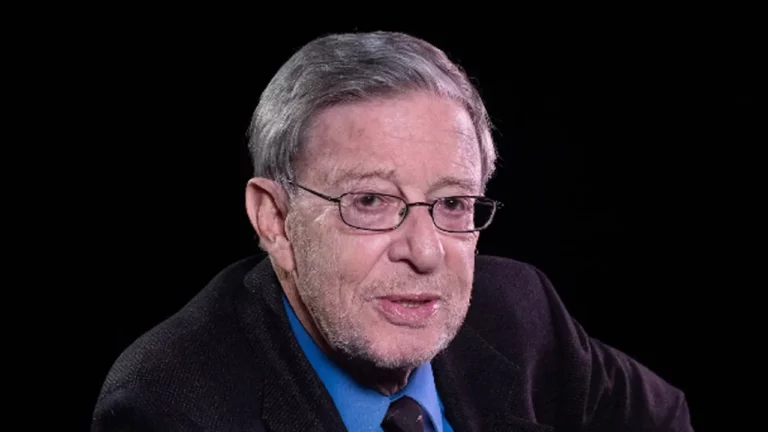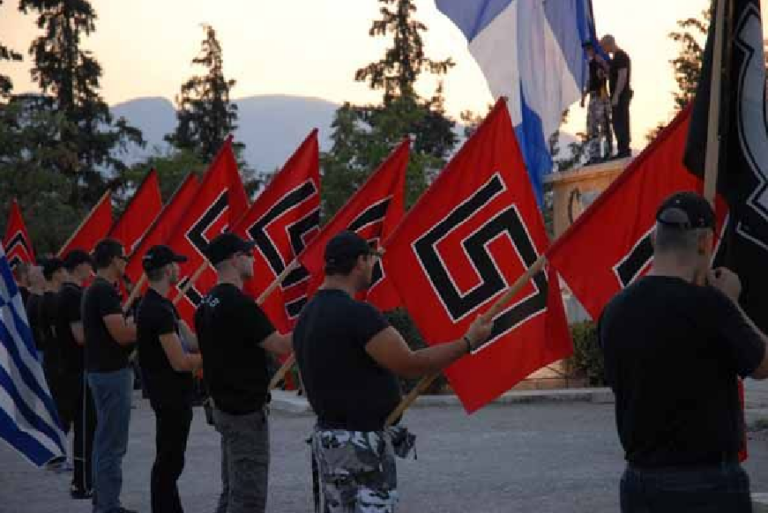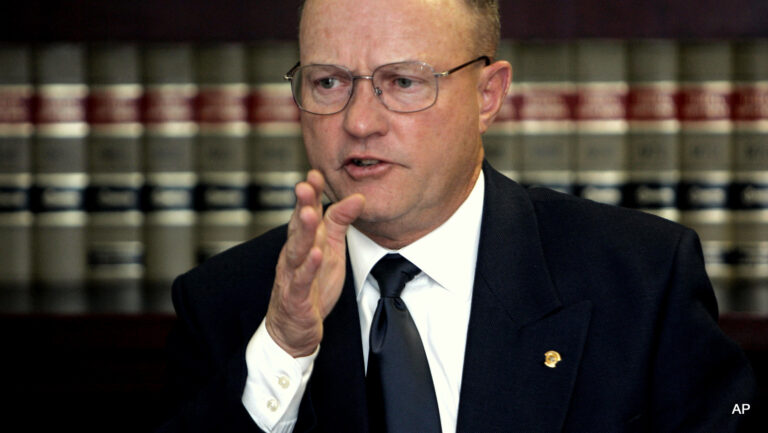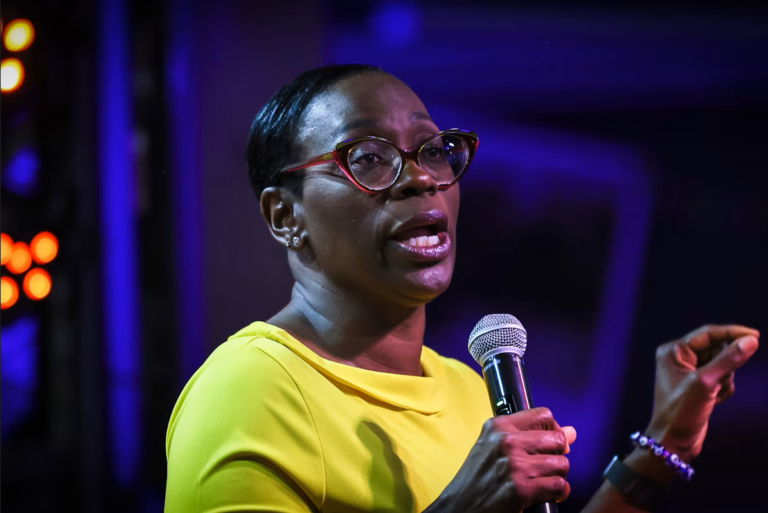Sad news that Bob Moses, a leader of the civil rights movement, died on July 25, 2021. We commemorate his work with a replay of his appearance on Reality Asserts Itself with Paul Jay, first released on June 20, 2014. Mr. Moses traces the events that led him to take up a leading role in Freedom Summer.
STORY TRANSCRIPT
PAUL JAY, SENIOR EDITOR, TRNN: Welcome back to The Real News Network. I’m Paul Jay in Baltimore, and this is Reality Asserts Itself.
We’re continuing our series of interviews with Bob Moses, who was one of the most influential leaders of the civil rights movement. He’s the founder of the Algebra Project. He was also one of the leaders of the Mississippi Summer project. And Bob joins us again in the studio. Thanks for joining us.
BOB MOSES, EDUCATOR AND CIVIL RIGHTS ACTIVIST: Yeah.
JAY: So, one more time, Bob is an educator, a civil rights activist. During the ’60s he was a field secretary for SNCC. He also was an outspoken critic of the Vietnam War. And he’s the founder of the Algebra Project, as I mentioned. He’s also the author of Radical Equations: Civil Rights from Mississippi to the Algebra Project, and coeditor of Quality Education as a Constitutional Right: Creating a Grassroots Movement to Transform Public Schools.
Thanks for joining us.
MOSES: Yeah.
JAY: So we’re going to pick up where we were. I asked you at the end of the last segment what you learned from the sit-ins, and what effect that had on you.
MOSES: I knew that something big was going on, right, ’cause I knew about my uncle, I knew about, you know, the lynchings and stuff like that. So I went down to visit Uncle Bill on my spring break. And so at this point in my life I’ve been at Harvard, I’ve gotten an MA. So I graduate from Hamilton in ’56. I spent a year at Harvard, I pick up my MA. I’m back there trying to get a doctorate when my mother passes, right? She’s really still young. She’s in her early 40s. My father just goes–he deteriorates, right, and he ends up in the hospital. So I leave, go back to New York, and get a job, eventually, teaching at Horace Mann School teaching math. And I’m there when the sit-ins break out. And so I go down on my spring break to see my uncle Bill.
JAY: Go down where?
MOSES: To Hampton, Virginia. Right?
So the students at Hampton are marching, demonstrating in Newport News, right? So I march with them over and walk the picket line while they sit in. And Wyatt Tee Walker comes down to do the mass meeting. Now, Wyatt eventually becomes the head of King’s organization, right, but right then he’s a minister in Petersburg. He announces that they’re going to set up an office in Harlem to raise money for King. So I get all the information and go back and go to the organizing meeting. Bayard Rustin is running that organizing meeting and ran the office, right? And so I go down every afternoon after school and volunteer at the office, right? I meet Jack O’Dell, who later becomes King’s–over his citizenship program, helping to run the program that Septima Clark developed in South Carolina. So they actually–Harry Belafonte and Sidney Poitier headlined the fund-raising event. They do it at the armory where my father’s working, right, the 369th Armory, right? And after the event, I asked Bayard if I can go down and work with King. I’m thinking he’s still in Alabama. So he tells me, well, I’ll send you to Ella Baker in Atlanta. Right? So Ella was actually at that time King’s executive director, right, of SCLC.
And so I get down that summer to Atlanta. And there in the office, Ella has a little room in the office. King uses his father’s office at the church. Dora is his secretary. And Jane, Jane Stembridge, is a young, white volunteer who had been at the Union Theological Seminary and came down to the meeting that Ella called that formed SNCC, and volunteered to be the first executive secretary for SNCC. So she’s in the office there. We hit it off ’cause philosophy and theology. Right? We’re talking all the time. And so that is where I learned about SNCC, and that’s where I begin the journey that eventually takes me to Mississippi.
JAY: So what year are we in?
MOSES: So this is 1960. The sit-ins hit in February 1, 1960. Ella had organized, on Easter weekend in 1960, the conference to bring the sit-in leaders together. And she did that ’cause Ella had been working across the South throughout the ’30s, ’40s, ’50s, so she knew everybody who had actually worked in the South against this racial apartheid, right? So she, through her contacts, got the sit-in leaders to come to her university as she graduated, Shaw in North Carolina. Right? So at that meeting she actually did something that impacted later all the work that I did, which was she created a space that protected the organizers, the leaders of the sit-in, from the older civil rights organizations that wanted them as a youth wing of their operation. So she kind of insisted and created a space so that they could come together and form their own organization. And that’s how SNCC came into being. And that happened on that Easter weekend.
JAY: And somewhere here you decide, or it kind of happens, that this becomes your life.
MOSES: Well, what happens is what they do at the–they set up a coordinating committee. Marion Barry is the first chairperson. And while I’m working, I’m doing this volunteer work, I’m staying at the YMCA in Atlanta. The coordinating committee comes and has its first meeting that summer in Atlanta, and they decide that they’re going to have a conference in the fall for sit-in leaders from across the South. And Jane has to be the organizer for the conference, right? She’s their secretary. And she comes to me and says, “I have problem: I don’t have any names from Alabama, Mississippi, and Louisiana of any people who sat in or any kind of sit-in activity in those states,” and asks me if I will go scout, right? So I agree. She and Ella get together, and Ella knows all of the really NACP or SCLC leadership in those states, gives the contact information to Jane; Jane writes letters to them saying that SNCC is sending its field representative, right, to come. And so I take off. They put me on a Greyhound bus. I take off. Talladega, Birmingham, Clarksdale, Cleveland, Jackson, Shreveport, New Orleans, and Biloxi, Gulfport, Biloxi, Mobile, back to Atlanta.
JAY: And, now, you’d been in New York. Clearly there was a black world and a white world. But you’d been in this, you know, elite education. But is this your first real drenching in the deep South?
MOSES: Yeah, this was the first time. I mean, our family once–I know at least once, maybe twice, our whole family when we were young went down to visit Uncle Bill. Right?
JAY: So how did that feel? What was the impression?
MOSES: Well, I was young, right [crosstalk]
JAY: No, I mean this trip now.
MOSES: This trip now? Yeah, so I’m a scout, right? I’m also somehow representing this very militant sit-in organization. There’s an expectation. So at the bus stop in Atlanta, they’re watching to see where I sit when I get on, right? So I sit up front until we get to the Georgia line and I go back. So when the bus hit Anniston, which is where later the Freedom Rider bus was bombed, the Highway Patrol guy comes on, but I’m in the back. He can’t tell me from anybody else, right? When I go to Clarksdale, right, Aaron Henry sees me off, and they’re watching where I sit. I sit up front, but nobody else is on the bus then.
But when I get to Cleveland, Amzie, he’s working at the post office. They’ve actually cut his hours down so he only works Saturdays, right? But he’s not home. I go over to the post office. But he tells me the rumor is that the Freedom Riders, that these sit-in riders have come to town, right?
But really I’m really working as a scout undercover, so to speak. I’m trying to be as inconspicuous as I can.
JAY: But your now direct experience with the apartheid, I mean, it’s not that it doesn’t exist in New York, but it doesn’t exist to the extent it did in the South. Does any–did that impress you in a specific way? Or is it kind of just what you expected?
MOSES: So, well, what I’m being exposed to is, and really through–Amzie was the first one who really begins to take me in. I spend several days there, and Amzie is the one who tells us what we should do, right? I mean, he really is the one that says–. He’s sitting on–he’s compiling the information about voter registration in the Delta. And it blows my mind, because I’ve been to all the schools, and we’re talking about, you know, the Iron Curtain; people are giving lectures at Horace Mann, and everybody oh, these people have to vote over there in Eastern Europe and everything, and no one, nobody ever said anything about this congressional district in Mississippi which is 80 percent black in terms of eligible voters that has never sent a black person to Congress, right? So it just blows my mind. And Amzie is plotting how he’s–how we’re going to–. And he sees the sit-in movement and the youth energy. He’s the only one on that whole trip who really sees that the energy is there now to take on Mississippi, right, in the Deep South.
JAY: And this becomes an issue of voter registration. There’s many more potential black voters, but they’re not being allowed to vote, essentially.
MOSES: Right. Yes. So it’s not sit-ins, right? So there’s no need to have direct action for (you know, sit-in activity here) what we really need. And Amzie has–he has a mind that has grown up and actually penetrated the mind of the white Southern male, men, right? So he has a real sense of what it needs and what it takes, how to turn the key that’s going to unlock this thing, except–.
JAY: And what was it?
MOSES: Well, it’s–what it turned out to be–and this piece of it Amzie didn’t have–it turned out to be the national Democratic Party structure.
JAY: Well, we going to pick up this whole issue of voter registration and the Democratic Party and the fight within the Democratic Party as we continue Reality Asserts Itself with Bob Moses. Please join us for the next segment on The Real News Network.






